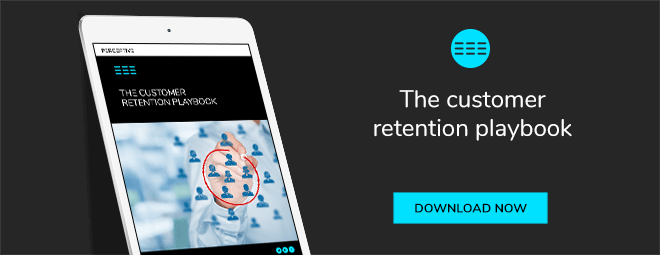Customer churn happens to every business. However, the frequency, extent and, most crucially, what is done about it varies from company to company—and is where successful businesses set themselves apart. As it turns out, winning back your churned customers is not only efficient, it’s smart business.
Why target lost customers at all?
Attempting new sales with entirely new prospects is a great way to grow your business, especially if you’re a fairly new business. However, if you’re beginning to exhaust your market, re-establishing those old relationships is a great strategy.
A study by the researchers of Marketing Metrics found that businesses are 60 to 70 per cent more likely to sell to an existing customer and 20 to 40 percent chance of winning back an ex-customer. Meanwhile, the chance of converting a prospect into to a new customer is only 5 to 20 per cent.
Compared to new prospects, lost customers have already shown a need for your product or service. Moreover, they are already familiar with your brand and, thanks to technology, you likely have their purchase history and a log of what content they’ve engaged–both valuable sources of insights.
As long as they’re approached in the right way, this can be achieved. So how do you go about winning them back? Here’s a simple step by step approach:

1. Identify at-risk customers
Do you have a system in place that can identify your at-risk customers and measure changes in sentiment over time? If not, this is something you should set up straight away. Customer insights and feedback are crucial to any retention efforts your business undertakes.
2. Retarget the right segments
If you have a high customer churn rate, it’s not sustainable to try to win back all your lost customers. Moreover, not all lost customers are viable to re-sell to. Therefore, you’ll want to identify which lost customers you should re-approach—and why they churned in the first place. In the same way you target your marketing to acquire new customers, do the same with your lost ones, particularly if they have:
- Recommended your product or service to others in the past
- Never made a complaint
- Made a complaint, but the issue was resolved to a high satisfaction
- Cancelled due to price, not poor service.
At this point, you’ll also want to determine the customer lifetime value. Did they buy new products or upgrades often or just the bare minimum? And how does this compare to the feedback that they’ve given you? It’s an easier sell if you mainly focus on customers who bought a lot and were relatively easy to sell to, than the opposite.
3. Remind them that you are still there
Sometimes it really is as simple as reminding previous customers that you’re there. There are two key items to keep top of mind when you do this:
Demonstrate that you still value them
Thank them for their previous business and even share your future vision or any exciting plans you may have coming up, particularly if it relates products or services they have previously purchased.
Make them an offer they cannot refuse
This could take the form of a special offer or discount—something to tempt the customer back. It will need to be valuable and relevant to them, ideally personalised to their needs and unique situation.
This strategy will have a higher success rate if you have been collecting customer data and analysing it for insights over time. The more information you have, the better equipped you are to tailor your offer to the customer in question.
Want to learn more about customer retention strategies? Check out our free Customer Retention Playbook below.
